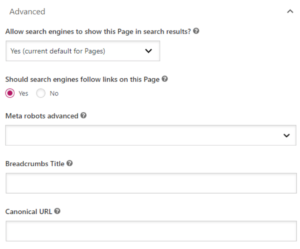How does duplicate content affect SEO? Duplicate content is one of the most misunderstood topics in search engine optimisation—mainly because there’s a lot of misinformation out there.
Some people think Google penalises duplicate content (it doesn’t). Others assume that if they copy content from another site, they’ll outrank it (they won’t).
The truth? Duplicate content very rarely gets you penalised.
What is Duplicate Content?
In short, duplicate content in SEO is content that appears in more than one place on the internet, whether across multiple pages on the same website or on completely different websites. Believe it or not, according to Google, around 60% of content on the internet is duplicate.
Here’s an example of what duplicate content may look like:
Original Content
“Optimising your website for SEO is crucial to improving search rankings and driving organic traffic.”
Copied Word-for-Word (Exact Duplicate)
“Optimising your website for SEO is crucial to improving search rankings and driving organic traffic.”
Slightly Rewritten (Near-Duplicate Content)
“Improving your website’s SEO is essential for boosting rankings and increasing organic site traffic.”
How Duplicate Content Affects SEO
Is duplicate content bad for SEO? Not in most cases. Duplicate content by itself rarely, or never results in a Google penalty unless “the intent of the duplicate content is to be deceptive and manipulate search engine results”.
However, that doesn’t mean duplicate content in SEO is harmless. While it won’t get you penalised, it can affect SEO in other ways:
It Can Hurt Your Site’s Rankings
Google has said many times that its main goal is to “deliver the most relevant and reliable information available”, and in 2025, Google is planning on focusing even more on original content, which Gary Illyes recently stated: “Originality is something we’re going to be focusing on this year. That’s going to be important”
Google has systems to make sure it prioritises original content in the search results, but if it can’t decide which is the original, if you have multiple pages that look alike, for example, then your rankings could suffer, and worst-case scenario, not rank at all.
This is where canonical tags come in handy; they allow you to specifically tell Google which page you want to be indexed in the search results, eliminating any guesswork that Google might’ve had to do otherwise.
Wasting Crawl Budget
Googlebot (the name of Google’s web crawlers) has a limited crawl budget, meaning it only crawls a certain number of pages per visit. If your site has lots of duplicate content and pages, Google may waste time crawling and indexing redundant content rather than discovering new, valuable pages.
We see this a lot on big e-commerce sites. Things like product, currency and language filters can cause 100s if not 1000s of duplicate pages, meaning Google has to crawl all of them.
Here is an example of duplicate issues we found on a client’s site:

Note: All of these issues came from currency and language filters.
Backlink Authority
A backlink is a link to your website from another site or vice versa. Backlinks are very important for SEO purposes because they tell Google that the information and content you are providing on that page is, more than likely, reliable and accurate.
When multiple pages feature duplicate content, backlinks may get split between versions. Instead of one page getting all the equity, the link equity is distributed across duplicates, diluting the overall impact in the first place.
Common Duplicate Content Issues + Fixes
Duplicate content issues in SEO can be accidental or intentional, but in most cases, it’s a technical issue that website owners don’t even realise exists.
URL Variations & Parameters
Different URLs can lead to duplicate content, creating duplicate pages that confuse search engines. This is especially common on e-commerce sites.
For example, a product page might exist under multiple URLs due to sorting, filtering, or tracking parameters.
- yourstore.com/shoes/product-name (Main Page)
- yourstore.com/shoes/product-name?sort=price (Filtered version)
- yourstore.com/shoes/product-name?utm_source=facebook (Tracking link)
Even though the content is exactly the same, search engines see these as separate pages.
Solution:
Use canonical tags to tell search engines which version to prioritise. So in the case of the example above, you would make yourstore.com/shoes/product-name the canonical of the other two pages.
HTTP vs. HTTPS & WWW vs. Non-WWW
If your website is accessible via HTTP and HTTPS, or with and without WWW, search engines might index both versions as separate sites.
These four URLs might all show the same content, but Google could treat them as different pages:
- http://yourwebsite.com
- https://yourwebsite.com
- http://www.yourwebsite.com
- https://www.yourwebsite.com
Solution:
- Set up 301 redirects to force all traffic to one preferred version (e.g., https://yourwebsite.com).
- Make sure your canonical tags match the preferred version.
Pagination & Category Pages
Pagination is useful for breaking content into multiple pages, like in blogs or product collections, but if not handled correctly, search engines may see each page as a duplicate of the first – even if the products or blogs on the page are different.
A category page on an e-commerce website might generate multiple paginated URLs:
- yourstore.com/shoes (Main page)
- yourstore.com/shoes?page=2
- yourstore.com/shoes?page=3
As mentioned above, even though these pages contain slightly different products, Google might struggle to understand the relationship between them.
Solution:
- Add a canonical tag pointing to the first page, so in this case – yourstore.com/shoes
- Use rel=”prev” and rel=”next” tags to link paginated pages.
Comment Sections & Tag/Category Archives Pagination
Many blogs and CMS platforms like WordPress automatically generate archive pages, tag pages, and comment section pagination.
A blog post may be indexed under multiple tag and category pages:
- yourblog.com/best-running-shoes (Original post)
- yourblog.com/category/fitness/best-running-shoes
- yourblog.com/tag/running-shoes
- yourblog.com/best-running-shoes/comment-page-2
Since these pages contain the same article, search engines might index the wrong version or dilute ranking signals across multiple URLs.
Solution:
- Use canonical tags to point tag/category pages back to the original post.
- Add meta robots “noindex” to tag and archive pages to prevent them from being indexed.
- Disable comment pagination if it creates unnecessary duplicate pages.
Copied Product Descriptions
Many e-commerce stores directly copy product descriptions directly from manufacturers as it’s a lot less time-consuming.
For example, if Nike provides a standard description for their shoes, tens, if not hundreds of stores might copy it:
“Nike Air Max trainers feature an advanced air cushion sole for superior comfort and performance.”
If every retailer uses the same description, Google may not rank your version at all because it sees the manufacturer’s site as the original source.
Solution:
- Instead of copying a product description straight from the manufacturer’s website, create your own.
- If you must use manufacturer descriptions, add additional value to the description, like specifications etc.
How to Fix & Prevent Duplicate Content Issues
Now that we’ve covered what causes duplicate content and some solutions, let’s get into how to fix them in more detail.
Search engines aren’t out to punish sites for duplicate content, but they do prefer clarity – so our goal is to make sure Google understands which pages to rank and which versions to ignore.
Use Canonical Tags (rel=canonical) to Tell Google the “Preferred” Page
A canonical tag tells search engines, “This is the main version of this page – ignore the duplicates.” This is one of the most effective ways to fix duplicate content in SEO.
When to Use Canonical Tags
- Product pages with multiple variations (e.g., colour, size, filters).
- Blog posts published in multiple categories/tags.
- Pages with URL parameters (e.g., tracking codes, session IDs).
For example, if yourstore.com/shoes and yourstore.com/shoes?sort=price have the same content, add this to the <head> of the preferred page:
<link rel=”canonical” href=”https://yourstore.com/shoes”>
You can also do this with plugins like Yoast SEO:
Go to the page which you would like to set the canonical for, click on “Advanced” and then enter the canonical into the “canonical URL” field.

Set Up 301 Redirects to Consolidate Duplicate Pages
A 301 redirect permanently sends users (and search engines) from a duplicate URL to the preferred version. This is essential for:
- Merging multiple URLs that lead to the same content.
- Forcing non-WWW to WWW (or vice versa).
- Redirecting HTTP pages to HTTPS.
For example, if you have both http://yourwebsite.com and https://yourwebsite.com, you should redirect all HTTP traffic to HTTPS using a 301 redirect – so in the code of the HTTP site add this in the <head>:
Redirect 301 / https://yourwebsite.com/
Note: This is most commonly done using plug-ins and apps in the backend, which is much easier than going into the code and doing it yourself.
For WordPress users, the easiest way to set up 301 redirects is through a plugin. One of the best free options is the Redirection plugin. Here’s how to do it:
- Install and activate the Redirection plugin from your WordPress dashboard.
- Go to Tools > Redirection.
- Click Add New Redirect.
- Enter the old URL in the “Source URL” field.
- Enter the new URL in the “Target URL” field.
- Click Save Redirect, and the 301 redirect is now active

Use Meta Robots Noindex to Block Low-Value Duplicate Pages
If you have archive pages or tag/category pages that don’t need to be indexed, you can tell Google not to index them using the noindex tag.
To prevent Google from indexing low-value, duplicate pages like blog-tagged pages (yourwesbite.com/tag/running-shoes) – add this to the <head> section:
<meta name=”robots” content=”noindex, follow”>
Don’t Let Duplicate Content Hold Back Your SEO
Duplicate content might seem like a small issue, but it can negatively impact your rankings and user experience – even if you don’t realise it. Search engines prioritise unique, high-quality content, so if your site contains duplicate pages or copied content, you lose out to your competitors.
At Climb & Conquer, an award-winning SEO agency, we specialise in technical SEO and content writing, making sure your website is technically sound so you can avoid common pitfalls like duplicate content issues. Whether you need a comprehensive content audit, canonicalisation fixes, or an improved site structure, we’ve got you covered.
How We Can Help
✔ Comprehensive Audits – Identify and eliminate duplicate content across your site.
✔ Technical Fixes – Implement canonical tags, 301 redirects, and meta robots to resolve duplicate URL issues.
✔ Content Strategy & Optimisation – Ensure every page offers unique, valuable content that search engines love.
✔ Ongoing SEO Support – Stay ahead of algorithm updates with a long-term SEO strategy.
Want to check if duplicate content is holding your site back?
Get in touch with our experts and get actionable insights to fix any SEO issues before they impact your rankings.


